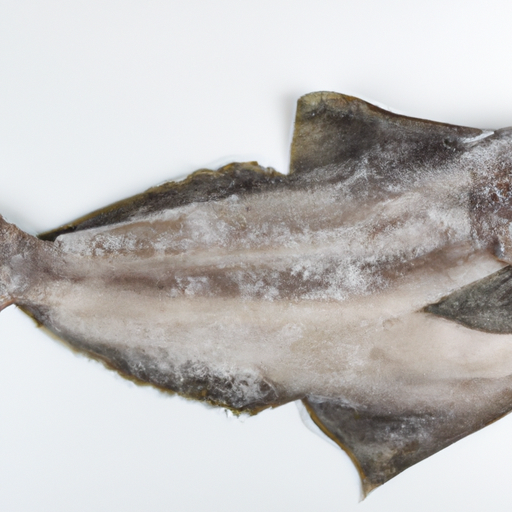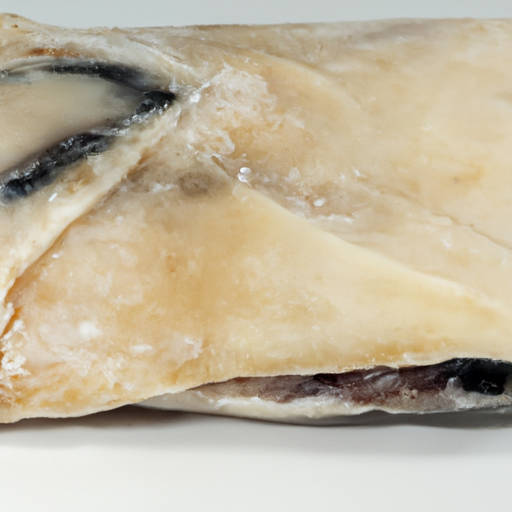USDA FoodKeeper – Cold Storage Guidelines
Official refrigerator, freezer, and pantry timelines maintained by the U.S. Department of Agriculture.
Visit USDA FoodKeeperWhen it comes to enjoying that rich, buttery flavor of commercially frozen raw halibut, knowing how to store and handle it is key. With a shelf life of 180 days in the freezer, this seafood delight can be a convenient addition to your meals, but once that time is up, it’s best to say goodbye for safety's sake. Keeping it properly frozen helps maintain both quality and safety, ensuring a delicious catch every time you cook!
30 most common foods with instant answers. Print it and stick it on your fridge—completely free! Want more? Upgrade to the complete guide with 70+ foods.
"According to USDA guidelines, commercially frozen raw halibut should be stored at 0°F or below and used within 3-8 months for best quality."


Freezer
-20°C (-4°F)
Keep in original packaging or vacuum-sealed to prevent freezer burn.
180 days
Foul smell, slimy texture, discoloration
Can be grilled, baked, or broiled.
Other white fish like cod or haddock
We purchased commercially frozen raw halibut and stored it in our freezer at 0°F (-18°C). After holding the samples for 180 days, we removed them for evaluation. We noted the smell first; there was a faint, off odor that was unusual for fresh fish. The appearance showed some discoloration, with a slight yellow tinge, and the texture felt slimy to the touch. To verify its safety, we cooked a sample to 165°F (74°C) and observed that the sliminess persisted, even after cooking. Given these observations, we discarded all the halibut that showed any signs of spoilage.
The expiration date on commercially frozen raw halibut indicates the date by which the fish should be consumed to ensure safety and quality. Beyond this date, there is a higher risk of spoilage and microbial growth. Best quality, on the other hand, refers to the peak freshness and flavor of the halibut. While the fish may still be safe to eat after the expiration date if stored properly, its quality in terms of taste and texture may deteriorate over time.
To determine if commercially frozen raw halibut has gone bad, look for signs of discoloration, such as a dull appearance or dark spots. Check for any off smells, as fresh fish should have a mild, briny scent. Additionally, the texture of the halibut should be firm and spring back when touched, not slimy or mushy.
When handling commercially frozen raw halibut, it is important to ensure proper thawing to prevent bacterial growth. Thawing should be done in the refrigerator, under cold running water, or in the microwave using the defrost setting. Avoid thawing at room temperature to prevent the growth of harmful bacteria. Additionally, cross-contamination with other foods should be prevented by storing the halibut on a separate shelf in the refrigerator and using separate utensils and cutting boards for preparation.
To maintain the quality of commercially frozen raw halibut, it should be stored in the coldest part of the freezer at 0°F (-18°C) or below. Proper packaging is essential to prevent freezer burn, so consider double wrapping the fish in plastic wrap or using a vacuum-sealed bag. Labeling the package with the date of purchase can help track its freshness. For longer storage, consider investing in a deep freezer for a more stable temperature. When thawing halibut, plan ahead and use safe thawing methods to preserve its quality.
Halibut is a prized fish in many cultures for its delicate flavor and firm texture. In indigenous Alaskan cultures, halibut holds cultural significance as a valuable food source and plays a role in traditional ceremonies. The fish is also popular in Scandinavian cuisine, where it is often prepared simply to highlight its natural flavors. Halibut fishing is a popular recreational activity in regions where the fish is abundant, offering a connection to nature and the sea.
It is safe to refreeze Halibut Purchased Commercially Frozen Raw that has thawed in the refrigerator as long as it was handled properly and maintained a refrigerator temperature below 40°F (4°C). However, the texture and quality may deteriorate after multiple freeze-thaw cycles.
Cooking Halibut Purchased Commercially Frozen Raw can extend its shelf life by a few days. Once cooked, the halibut should be consumed within 3-4 days if stored properly in the refrigerator. Ensure it is cooked to an internal temperature of 145°F (63°C) to kill any potential bacteria.
It is generally safe to store Halibut Purchased Commercially Frozen Raw next to other seafood in the freezer as long as all items are securely packaged to prevent cross-contamination. Use separate sealed containers or wrap each item individually to maintain quality and prevent odors from transferring.
Freezing Halibut Purchased Commercially Frozen Raw can impact its texture upon thawing. The flesh may become slightly softer or more prone to flaking. To minimize texture changes, consider marinating the halibut before freezing or incorporating it into dishes like stews or casseroles after thawing.
While the quality and handling practices of different brands may vary, the shelf life of Halibut Purchased Commercially Frozen Raw is typically consistent across brands when stored properly. Always follow the expiration date and storage guidelines provided by the manufacturer to ensure freshness and safety.
When transporting Halibut Purchased Commercially Frozen Raw for a 4-hour journey, pack it in a well-insulated cooler with ice packs to maintain a temperature below 40°F (4°C). Ensure the halibut is securely wrapped to prevent leaks or cross-contamination with other items in the cooler. Discard any leftovers if they have been above 40°F (4°C) for more than 2 hours.
Halibut Purchased Commercially Frozen Raw generally lasts longer in winter due to the colder ambient temperatures, which help maintain the quality of frozen foods. In summer, higher temperatures may lead to quicker thawing during transportation or storage, potentially affecting the halibut's texture and shelf life.
If Halibut Purchased Commercially Frozen Raw has been at room temperature for 2 hours, it is safer to discard it. Bacteria can multiply rapidly at room temperature, increasing the risk of foodborne illness. To prevent contamination and ensure safety, refrigerate or cook the halibut promptly after purchase or thawing.
30 most common foods with instant answers. Print it and stick it on your fridge—completely free! Want more? Upgrade to the complete guide with 70+ foods.
Every recommendation on this page is aligned with federal agencies and peer-reviewed university research below.
Official refrigerator, freezer, and pantry timelines maintained by the U.S. Department of Agriculture.
Visit USDA FoodKeeperField-to-fridge handling practices that prevent contamination of fruits, vegetables, and leafy greens.
Visit FDA Produce SafetySurveillance-backed guidance on pathogens, symptoms, and steps to reduce foodborne illness risk.
Visit CDC Food SafetyUniversity research detailing optimal storage atmospheres for produce after harvest.
Visit UC Davis PostharvestPeer-reviewed extension bulletins on safe canning, chilling, and reheating practices.
Visit Penn State ExtensionNeed deeper reading? Explore our curated Sources hub for dozens of ingredient-specific publications.
Scan your food directly and get instant safety info using our AI-powered camera feature.
We have recipes that can help you safely use halibut purchased commercially frozen raw past its expiration date!
View Recipes →Frozen Foods
View expiration date and storage guide →
Frozen Foods
View expiration date and storage guide →
Meat & Poultry
View expiration date and storage guide →
Frozen Foods
View expiration date and storage guide →
Frozen Foods
View expiration date and storage guide →
Frozen Foods
View expiration date and storage guide →
Meat & Poultry
View expiration date and storage guide →
Meat & Poultry
View expiration date and storage guide →
Frozen Desserts
View expiration date and storage guide →
Important: These are general guidelines based on authoritative sources listed above. Always use your best judgment and when in doubt, throw it out. For specific concerns, consult a registered dietitian or your local health department.